By adding contemporary elements to traditional Korean music, young artists are creating a new brand of the Korean Wave, which is distinctly different from K-pop. The growing international recognition they are garnering owes much to the caliber of the masters who performed on the world stage before them and the efforts of promoters behind the scenes.
Awhile back, I was accompanying a group of musicians for an overseas performance. We decided to go on a picnic after the show was over. It was spring and we had a day off in the desert. Everyone was carefree because we had promised to “forget about art for just one day.” Humming to ourselves, we made our way to a “cool stream.” The moment we dipped our feet in the water, we were pleasantly surprised at how warm it was. Just as we were truly relishing being in the Arab region, we heard a rhythmic sound from across the stream. We looked up and saw a few boys carrying something resembling drums and playing a beat. Forgetting our promise to stay away from music for the day, we approached the boys one by one, and soon enough found ourselves singing and dancing to their drumbeat. We only knew two Arabic phrases – “as-salamu alaykum” (peace be upon you) and “shukran” (thank you) – but that was sufficient to keep us talking and laughing together.
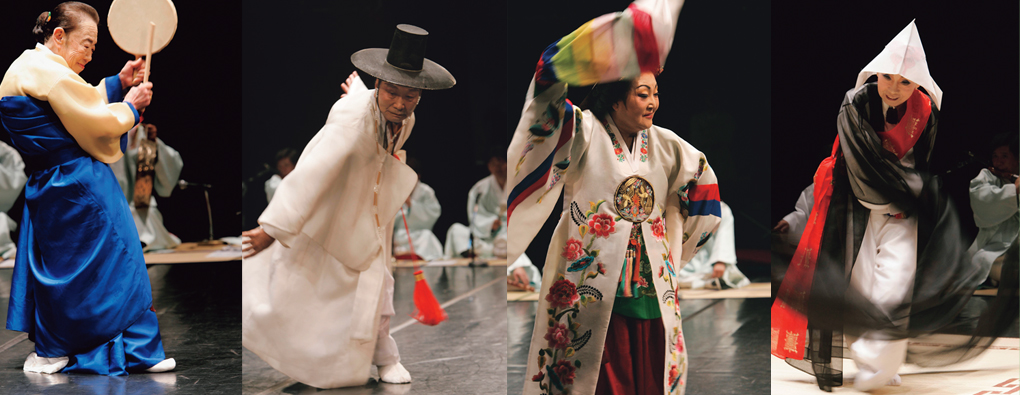
As part of the 8th edition of the Seoul International Dance Festival in 2005, “The Perfect and Precious Dances by Virtuosos” was staged at CJ Towol Theater of the Seoul Arts Center, featuring six veteran dancers showing off the beauty and power of traditional Korean dance. Shown here are four of them: from left, Kim Su-ak (1926-2009), Kim Deok-myeong (1924-2015), Kang Seon-yeong (1925-2016) and Lee Mae-bang (1927-2015). © NewsBank
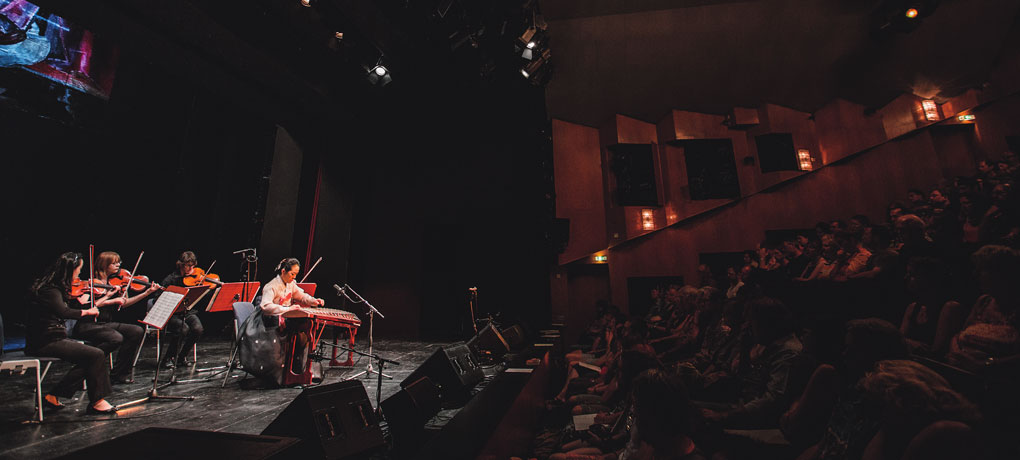
Kim Hae-sook performs “Gayageum Sanjo” with the quartet of the University of Music Franz Liszt Weimar at the Rudolstadt Festival in July 2014. She was the first Korean to headline the German world music festival. © Jeonju International Sori Festival
Masters on the World Stage
“The Perfect and Precious Dances by Virtuosos” was a performance given in 2005 by six dancers with an average age of 80. Renowned for their brilliance, the masters danced to tunes played by yet another group of talented musicians who sat in a long row on a floor mat on the stage. The show was planned by Jin Ok-sub, a producer of traditional art performances and current president of the Korea Cultural Heritage Foundation. It was part of the eighth edition of the Seoul International Dance Festival, also known as SIDance.
Among the audience was Gisèle Depuccio, deputy director of Festival Montpellier Danse. She decided then and there to invite the masters to France a year later for a show to be named “Trésors Vivants” (“Living Treasures”). With 2006 marking the 120th anniversary of diplomatic relations between Korea and France, the Korean Ministry of Culture, Sports and Tourism eagerly agreed to cover airfare and freight transport for the performers, while the festival headquarters would pay the high booking fees and other costs. There were to be two performances, one at the Opéra Comédie in Montpellier and the other at the Chateauvallon National Theater of Dance and Image in Toulon.
Time was not kind to the dancers, however. Over the course of the ensuing year, some of them would follow the path to heaven, the skirt of their long robes fluttering gracefully behind them. The team managed to get on the plane only after a few members had been replaced, slightly lowering the average age. After their performance at the Opéra Comédie in Montpellier Square, the front of the theater was packed with audience members who didn’t yet want to go home. The cast were tired, but felt obliged to celebrate with the crowd. Noreum Machi, who participated as supporting instrumentalists, played some madang nori (traditional outdoor theater) pieces. It was a gala affair, and both local media and Le Monde interviewed farmer-cum-dancer Lee Yun-seok, who, when at home, would occasionally stop watering his grape vines to come out and dance in the empty rice paddies before returning to his greenhouse. Correspondents of the Agence France-Presse (AFP) were busy sending pictures of Kim Deok-myeong’s masculine crane dance to their news desk. One of the theater staff commented, sobbing, “I think Jang Geum-do’s salpuri (exorcism) dance would have consoled my dead mother’s soul.”
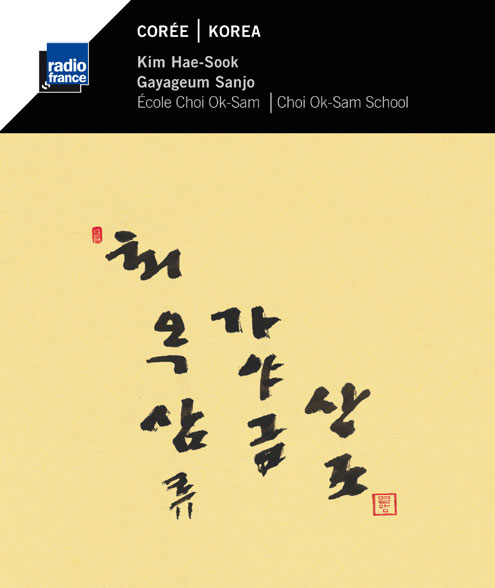
“Gayageum Sanjo: École Choi Ok-Sam” produced by Ocora Radio France in 2012. Harmonia Mundi released the album in more than 60 countries, introducing sanjo instrumental music to the world.
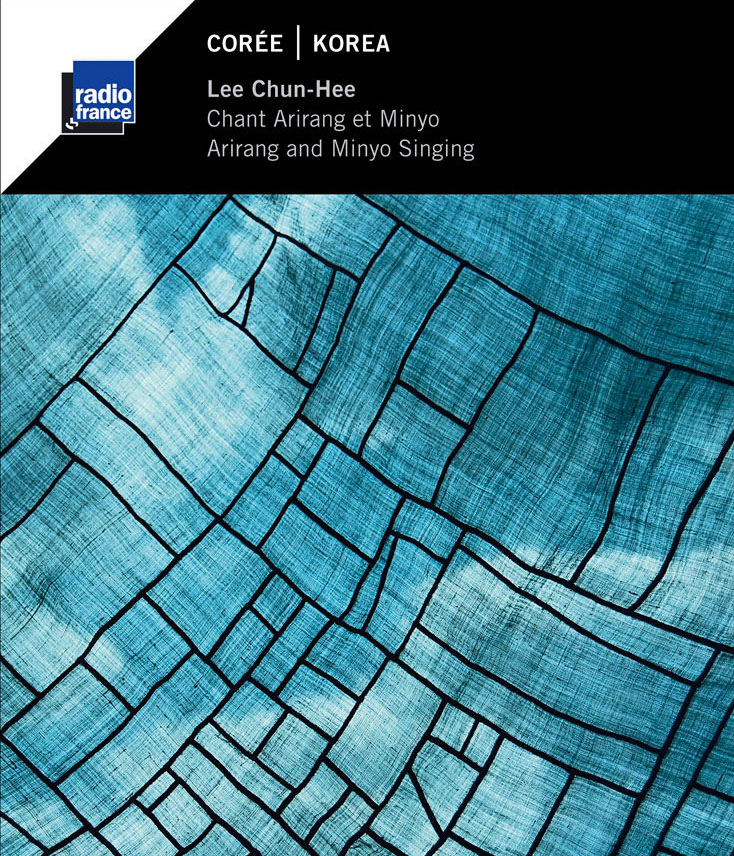
“Chant Arirang et Minyo,” released by Ocora Radio France in 2014, contains recordings of Lee Chun-hee, master singer of folk songs handed down in the Gyeonggi region.
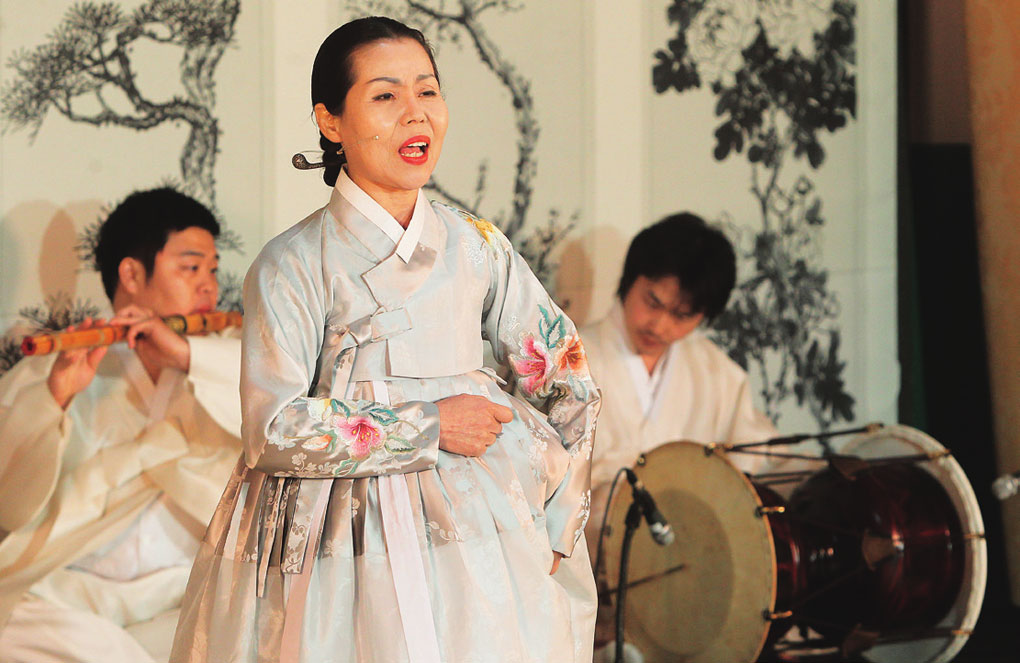
Lee Chun-hee sings at a joint concert by master musicians held in April 2011 at Deoksu Palace, hosted by the Korea Cultural Heritage Foundation. © Yonhap News Agency
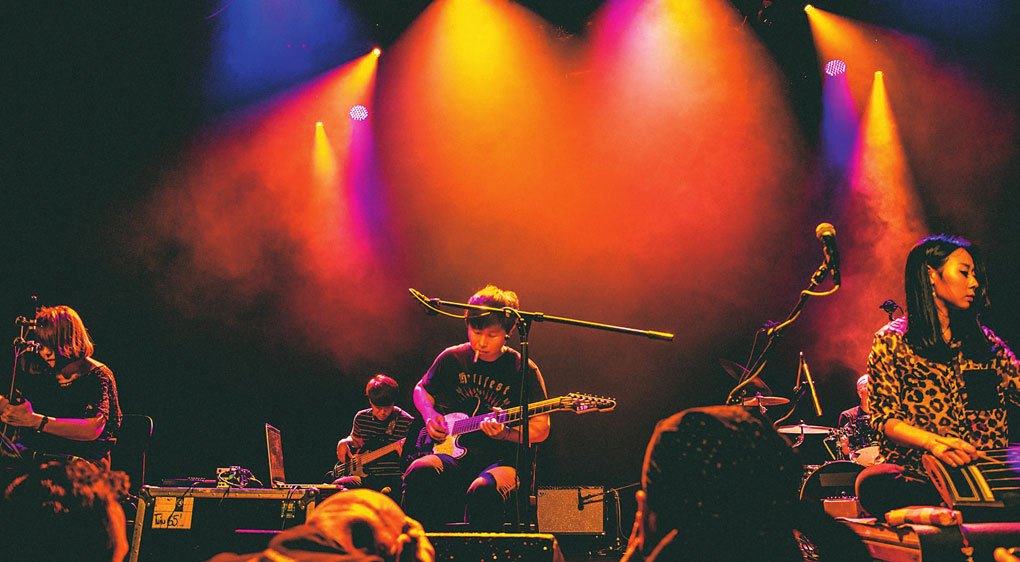
The fusion gugak band Jambinai plays at Palác Akropolis in Prague in April 2017. In the front are: from left, Kim Bo-mi on the haegeum, Lee Il-woo on the guitar and Shim Eun-yong on the geomungo. At the back is Yoo Byeong-gu on the bass guitar. © Song Jun-ho
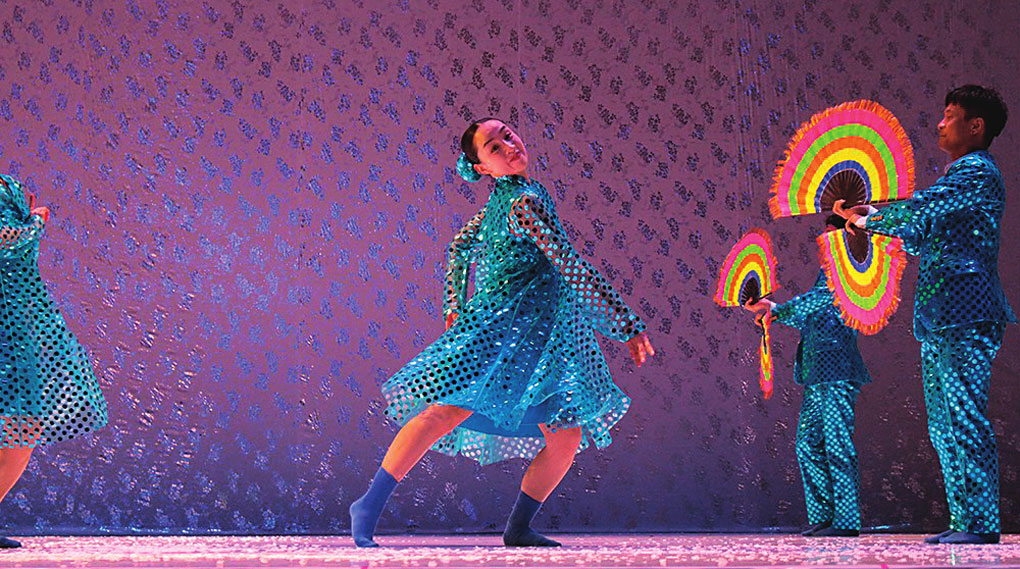
A scene from “North Korean Dance,” premiered in 2018 by the Ahn Eun-me Company at Arko Arts Theater in Seoul. It was selected as a seasonal event of the Théâtre de la Ville of Paris in 2019, and also as the closing show of the Festival Pays de Danses, hosted by Belgium’s Théâtre de Liège in February 2020. © Gadja Productions
International Credibility
On Amazon, buyers can find masterpiece albums sought after by fans of traditional Korean folk music. In 2012, prestigious record label Ocora Radio France produced “Corée: Gayageum Sanjo: École Choi Ok-sam,” featuring Kim Hae-sook playing the solo gayageum piece. Maison des Cultures du Monde (World Cultures Institute) released albums by two other master instrumentalists, Kim Young-gil on the ajaeng and Lee Jae-hwa on the geomungo, in 2012 and 2013, respectively. These albums received favorable reviews from British and German music critics.
That same year, when the Korean folk anthem “Arirang” was inscribed on UNESCO’s Representative List of the Intangible Cultural Heritage of Humanity, Gyeonggi minyo (folk song) master Lee Chun-hee gave a congratulatory performance at the UNESCO headquarters in Paris. And in 2014, Festival de l’Imaginaire, a dream stage for most Korean artists, invited Lee to perform in the opening show. When long years of hard work and training pay off and put you at the top, it seems that even the sound of your breathing becomes art. Numerous talented young musicians would die for an opportunity that practically fell into Lee’s lap. However, it is not talent alone that puts them on the world’s most coveted stages. The promoter who had opened the doors for Korean performers to the Rudolstadt Festival as well as Festival de l’Imaginaire humbly refused to take credit, saying, “I’m happy as long as the masters who have devoted their lives to their art are given due respect.” But all these achievements would not have been possible without international credibility built by, among others, Kim Sun-kook, the only Korean music producer at Radio France and CEO of Just Music & Publishing, Inc.
The Korean music community keeps cheering on emerging talents, and in the midst of the COVID-19 pandemic, world music agents quick to notice them are counting the days until they can fly again.
Star Artists
Thanks to young artists who have kept up traditions and injected a modern edge, more and more Korean musicians are performing overseas, and many native Korean musical terms and s are being translated into different languages. The band Jambinai, in particular, stunned the world music industry by merging classical gugak (literally “national music”) with rock almost resembling heavy metal. Recognized as “trendsetters, not trend followers,” this amazing group is more often found overseas than at home. They have strategically utilized music retail markets and signed a contract with a famous record label. On the back of the band’s success, other musicians are partnering with industry experts to take a systematic approach toward global outreach.
Out of many different music genres, world music featuring “fusion gugak” is especially active, with performers having a relatively better shot at landing an overseas show. However, the Korean artist that the foreign performance community welcomes with open arms is none other than Ahn Eun-me. She studied traditional Korean dance, continued her studies in New York, and eventually debuted as a contemporary dancer. Her performances are a vibrant mixture of spectacular colors and vigorous movements. Every piece has a story, and she always reaches out to the audience to communicate her message: “Let’s be happy together now!” It’s probably because of this message that French promoter Jean-Marie Chabot works hard to make Ahn an international success. Chabot says that seeing Ahn perform warms his heart and makes him happy.
Adding idiosyncratic elements of Ahn Eun-me’s dance and philosophy to the folk song genre, Lee Hee-moon began his career as a student of master singer Lee Chun-hee. This “Joseon Idol” has created a sensation with his “seeing music.” He is at once a singer who shouts, “Let’s play!” to his audiences and an actor who has imbibed the fabulous magnificence Ahn Eun-me displays on stage. Donning fishnet stockings, high heels, spangled dresses, and a pink, yellow or blue wig, Lee plays hard on stage and draws fervent responses from his audience. He was lead vocalist for the group SsingSsing when it was invited to globalFEST 2017 in New York, attracting attention as the only Asian group. His radically innovative performance there earned him the nickname “Lady Gaga of Minyo,” and America’s National Public Radio (NPR) called SsingSsing one of its top discoveries of the festival. In 2019, the group became the first Koreans to perform on NPR’s Tiny Desk Concerts, a video series that has featured the likes of Adele and John Legend, with their show racking up more than five million views on YouTube as of August 2020.
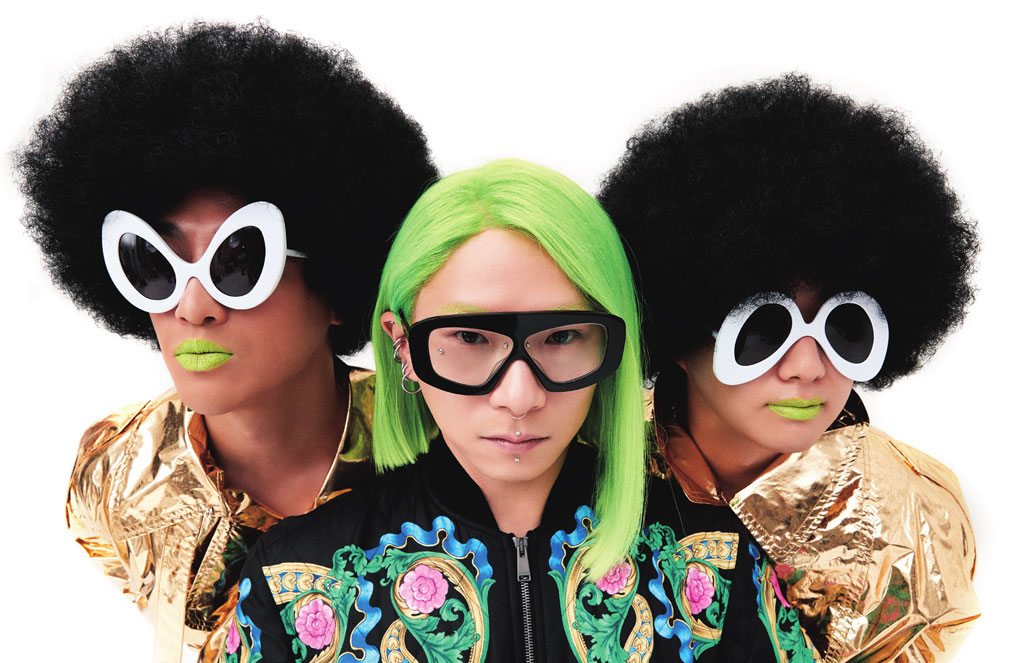
Singer Lee Hee-moon (center) formed the project group OBANGSINGWA (OBSG; meaning “Along with the Deities of the Five Directions”) with the folk song duo NomNom and the band Heosongsewol (“Waste Time”). Lee and Shin Seung-tae (left) from NomNom were members of the group SsingSsing, which caused a stir with their performance in 2019 for NPR’s Tiny Desk Concerts in Washington, D.C. © Kwak Ki-gon
Toward the Digital Stage
The Korean music community keeps cheering on emerging talents, and in the midst of the COVID-19 pandemic, world music agents quick to notice them are counting the days until they can fly again. The epidemic has changed the world overnight, leaving us wondering on which digital platforms we should upload the beautiful music and mesmerizing dances we want to share with audiences worldwide. We don’t have the financial resources to compete with Netflix or the technology to impress the new media generation who are now into extended reality (XR). Nor is there any telling how long audiences will wait patiently for offline performances to resume. Nonetheless, we should give time to the artists who have worked hard to promote Korea to the rest of the world – who are holding tight to their microphones and instruments, craving the loud applause, as they continue to put in long hours of practice – until the day they can deliver on screen the vivid excitement of their live stage performances.